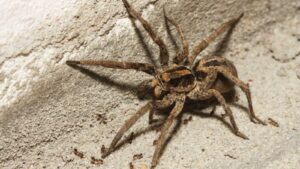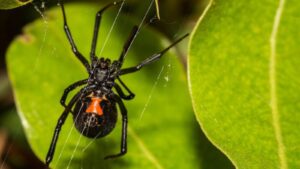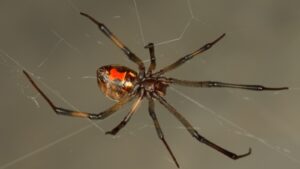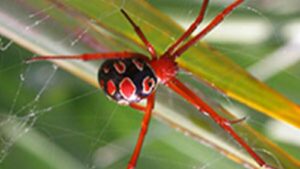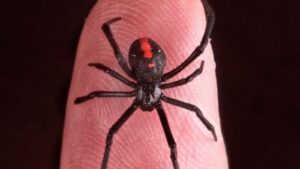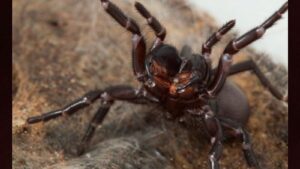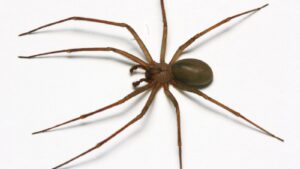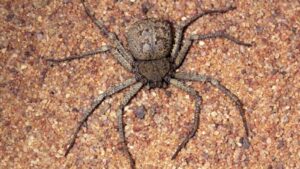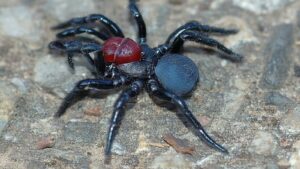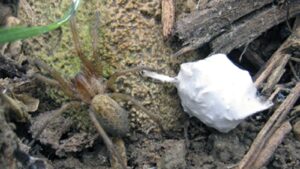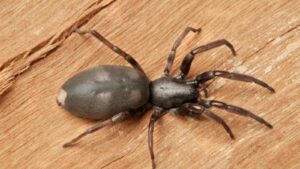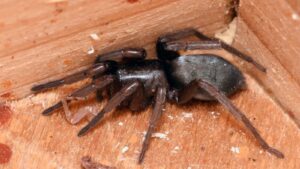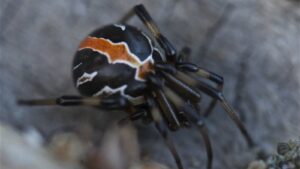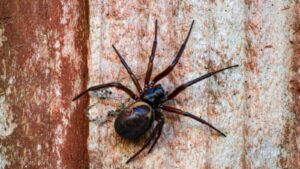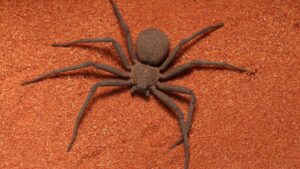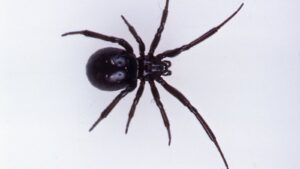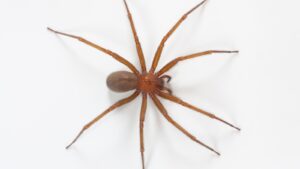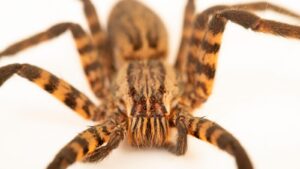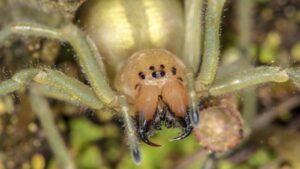Top 20 Most Venomous Spiders in the World
Summary
Top 20 Most Venomous Spiders in the World! More than 43,000 different species of spiders are found in the world. Of these, only a small number are said to be dangerous, and less than 30 have been responsible for human […]
Top 20 Most Venomous Spiders in the World! More than 43,000 different species of spiders are found in the world. Of these, only a small number are said to be dangerous, and less than 30 have been responsible for human deaths. Their four pairs of eyes, eight legs, and general ugly appearance make them freaky creatures. Here are the top 20 most venomous spiders in the world.
Video: Top 20 Most Venomous Spiders in the World
Wolf spider
This largest spider has prominent eyes that shine in the light. They range from 1/2 inch to 2 inches long. Wolf spiders are usually gray with brown to dark gray markings. Wolf spider bites look like other bug bites. You may notice a red bump that’s also itchy and swollen. It usually goes away within a few days. Unless you actually see the wolf spider bite you, it’s usually difficult to determine what bit you.
Video: Top 20 Most Venomous Spiders in the World
Black Widow Spider
This venomous spider is responsible for more than 2,500 visits to poison control centers every year in the U.S. It is one species that can be found in the United States and parts of Canada through Latin America and the West Indies. The most common member of Latrodectus in North America, it makes its home in a variety of settings, such as woodpiles, burrows, or among plants that serve as supports for its web. The female is shiny black and usually has a reddish to yellow hourglass design on the underside of the spherical abdomen.
Brown Widow Spider
The brown widow is thought to have evolved in Africa, but the first specimen described came from South America. It is classified as an invasive species elsewhere around the world. Brown widow populations have appeared in southern California, the Caribbean, the U.S. states of the Gulf Coast, as well as in Japan, South Africa and Madagascar, Australia, and Cyprus. The species makes its home in buildings, inside old tires, and under automobiles, as well as among shrubs and other vegetation.
Red Widow Spider
The spider’s appearance is distinguished from other widow spiders by its reddish cephalothorax and legs and its reddish-brown to black-colored abdomen. Many red widows have a red mark on the underside of the abdomen, which may be either hourglass-shaped, triangle-shaped, or indistinct. The top of the abdomen is spotted red or orange, with each spot surrounded by a yellow or white outline. The leg span of an adult female is 1.5-2 inches, whereas the male is only about one-third of that size.
Redback Spider
It is native to Australia, but it has spread to New Zealand, Belgium, and Japan through grape exports. The spider often builds nests and webs on grape leaves and inside bunches. This one of the most poisonous spiders is widespread throughout Australia, living in all of the continent’s varied environments, except for its hottest deserts and frigid mountaintops. The species is also found in urban areas, frequently making nests in human dwellings. The redback is identified by its prominent red stripe or hourglass-shaped mark on its black-colored back. This mark is more noticeable on female redbacks than on males.
Sydney Funnel-Web Spiders
The spider sits in the narrow funnel waiting for prey to contact the web. When this happens, the spider rushes out and captures the insect prey at the funnel’s mouth. Brown, bulky spiders are much feared in southern and eastern Australia because of their venomous bites. Several human deaths from the bites of these venomous spiders have been recorded in the Sydney area since the 1920s. An antidote to the main toxin in their venom has been developed, which is effective if administered to victims soon after they have been bitten.
Brown Recluse Spider
Brown recluse spiders are considered the most venomous spiders in the United States. If bitten, victims could experience fever, convulsions, itching, nausea, and muscle pain. In extreme cases, they could also experience necrosis, death of skin tissue. Brown recluse spider bites usually occur while indoors and as a defense mechanism as they are crushed or rolled over in bed. Some bites will present with only an urticarial rash. If the bite is more severe, the course usually is as follows. The initial bite will be painless, but over the subsequent two to eight hours it will become increasingly painful.
Six-eyed Sand Spider
It is a medium-sized spider with a body measuring 8 to 15 mm and legs spanning up to 50 mm, found in deserts and other sandy places in southern Africa. Due to its flattened stance and laterigrade legs, it is also sometimes known as the six-eyed crab spider. Bites by Sicarius to humans are uncommon; there are no proven cases and only two suspected cases where the culprit was never identified. Sicarius bites have been experimentally shown as lethal to rabbits within 5 to 12 hours. One amazing fact is the genus name Sicarius is Latin for ‘murderer,’ from sica, a curved dagger.
Let’s look into the top 10 deadliest spiders.
Red-Headed Mouse Spider
Female red-headed mouse spiders have been found to produce copious amounts of a highly toxic venom, which is potentially as dangerous as that of the Sydney funnel-web spider. Mouse spider venom may be very toxic, but few cases of serious envenomation have been recorded. Other bites have occurred, causing minor effects. Funnel-web spider antivenom has proved effective in the one confirmed case. Until more toxicity data is available, it is prudent to treat it as a funnel-web spider bite, especially if the victim is a child.
Hobo Spider
Hobo spiders were originally thought to cause horrible lesions if a human was bitten, but recent studies have dispelled this notion. While they are not considered medically threatening, their venom can cause redness, swelling, and twitching for several hours. Usually, these most dangerous spiders choose to hide in dark places and moist areas, such as woodpiles, basements, retaining walls, large cracks, crevices, or other cavities in rock walls, foundations, or other constructions. They often have a light stripe running down the middle of their bodies.
Read More: Top 20 Abnormally Large Airplanes That Actually Exist
White-tailed Spider
The venom from the white-tailed spider is listed as non-lethal. It has not been shown to cause necrotic ulcers, which could result in the need for amputation. And there has never been any clear evidence necrotizing arachnidism—the name given to a syndrome where the skin blisters and ulcerates following spider bites—has been seen in Australia. There is currently no clinical test to determine if you have been bitten by a spider. And there is no blood or swab test that can be performed to positively identify what spider it is if a bite is suspected.
Trapdoor Spider
The bite of the trapdoor spider is of low risk to humans. It is a non-aggressive spider and is usually timid; however, it may stand up and present its fangs if harassed. Trapdoor spiders rarely bite; however, if they do so, it can be very painful. Brown trapdoor spiders are often mistaken for funnel-web spiders; however, their bites are not dangerous. Local pain and swelling may occur. Sigillate trapdoor spider bites may also cause local pain and swelling. There is one report of unspecified ‘severe effects’ from a Sigillate Trapdoor Spider bite.
Scotophaeus Blackwalli
This species is widespread in Britain and northern Europe. They are commonly found in Britain around and inside houses, usually in the autumn, and also under bark and in holes in walls in warmer parts of Europe. It hunts nocturnally. The adult males of these spiders reach 9mm in length, maturing in the early summer, while females reach 12mm and can be found until autumn. The carapace is dark brown, while the abdomen is brown or grey with hairs resembling the body of a mouse.
Katipo Spider
Native to New Zealand, the katipo spider is endangered. Only the female is capable of biting a person, but their bite isn’t thought to be lethal but rather unpleasant. By “unpleasant,” we include symptoms like abdominal cramping, sweating, fever, and shaking. Katipo bites are very uncommon, and while likely to be unpleasant, are not likely to prove lethal. Typical symptoms include pain at the site of the bite, which may spread to other areas, becoming more intense over the hours that follow.
Noble False Widow
One of the more poisonous spiders found in England, the noble false widow spider is the most venomous of three types of false widow spiders. Its bite causes pain, swelling, and nausea, and the fact is if it becomes infected, it can lead to gangrene. Although false widows do have a venomous bite, the venom is not particularly potent. Usually, the only symptom is pain at the site, which may radiate away from the bite. It ordinarily lasts between one and 12 hours, and rarely for more than 24 hours. Often, the symptoms are no worse than the pain of a wasp sting.
Six-Eyed Sand Spider
While the six-eyed sand spider is very shy, this dangerous spider is also known to be incredibly venomous. Because it does not go near humans, there have been few cases of it biting a person. However, in one known case, a man lost his arm from necrosis. If bitten by a six-eyed sand spider, most assume it’ll end in a fatality because there’s no antivenom. The six-eyed sand spider has a body length of up to 0.6 inches, and the width across the legs is about 2 inches.
Cupboard Spider
The cupboard spider isn’t known to be dangerous to humans. For most people, their reactions to venom are similar to a wasp sting. However, there have been a few cases where more serious symptoms were recorded. The female cupboard spider could easily be mistaken for a redback spider but lacks the distinctive red stripe on the back. Both spiders are from the same family, Theridiidae, so they are closely related. However, the cupboard spider is not considered as dangerous as its redback relative.
Chilean Recluse Spider
While death resulting from their bites is very uncommon, the Chilean Recluse Spider can cause serious symptoms such as skin irritation and death of skin cells. The application of an ice pack helps as first aid because the venom is more active at high temperatures. Applying aloe vera may soothe and help control the pain. The spider should be brought with the patient in a clear, tightly closed container for identification if it can be captured. The Chilean recluse spider is native to South America.
Tiger Wandering Spider
The Tiger Wandering Spider is similar to the Brazilian Wandering Spider. It has a complex neurotoxic venom and is known to cause severe pain, among other symptoms, upon biting. This is probably a female at about 3.5cm body length. Its most conspicuous feature is the pale markings on the abdomen. This one of the biggest spiders is grey or brown in color with darker longitudinal stripes on the cephalothorax and dark bands on the first segment of the legs. Its venom has been extensively studied for its bactericidal and insecticidal properties.
Read More: 20 Lightning Strikes in Real Life
Yellow sac spider
A rare complication that can occur when bitten by one of these spiders is rotting of the flesh. Yellow sac spider venom contains cytotoxin, which can create necrosis in the bite wound. For this reason, bites from yellow sac spiders are often mistaken for the bite of a brown recluse. It is important to understand that brown recluse venom is much more potent than the venom of a yellow sac spider. One interesting fact is, for some people, this animal bite can be completely painless.
What is the most dangerous spider? Have you ever seen any of them? Let us know in the comment section.
